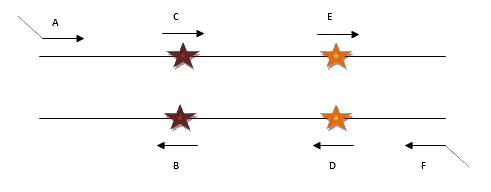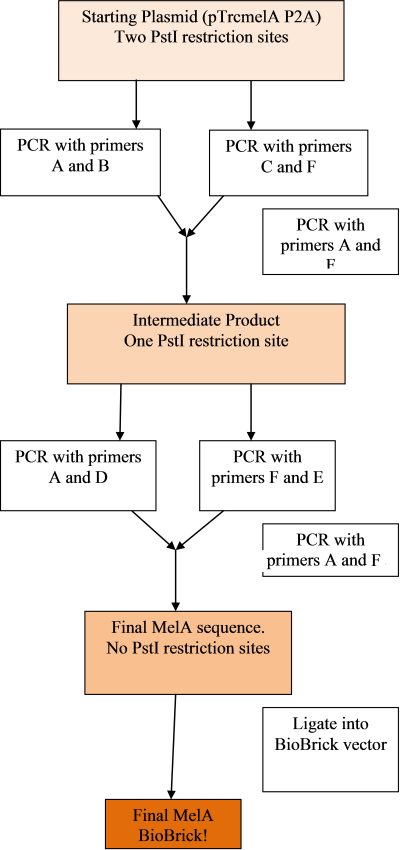Team:Cambridge/Project/ME02
From 2009.igem.org
(Difference between revisions)
(→Constructing the BioBrick) |
(→Constructing the BioBrick) |
||
| Line 23: | Line 23: | ||
[[Image:MelAbiobrick.jpg]] | [[Image:MelAbiobrick.jpg]] | ||
| + | |||
| + | ===Biobrick Parts=== | ||
<!--DONT EDIT THIS BIT:----------------------------------------------------------------------------> | <!--DONT EDIT THIS BIT:----------------------------------------------------------------------------> | ||
| Line 32: | Line 34: | ||
|- style="color:#333; background-color:#A3C3FF;" cellpadding="6" cellspacing="0" border="1" | |- style="color:#333; background-color:#A3C3FF;" cellpadding="6" cellspacing="0" border="1" | ||
<!----------------------------------------EDIT HERE ONWARDS----------------------------------------> | <!----------------------------------------EDIT HERE ONWARDS----------------------------------------> | ||
| + | |||
| <partinfo>BBa_K274001</partinfo> | | <partinfo>BBa_K274001</partinfo> | ||
| - | | Reporter | + | |Reporter |
| - | | '''MelA'''. The gene (melA) codes for a tyrosinase which produces a dark brown pigment from L-tyrosine. Production of the pigment requires the addition of copper and L-tyrosine supplements (the copper acts as a cofactor for the gene product) but no other precursors. The BioBrick sequence includes the native ribosome binding site. | + | |''''MelA'''. The gene (melA) codes for a tyrosinase which produces a dark brown pigment from L-tyrosine. Production of the pigment requires the addition of copper and L-tyrosine supplements (the copper acts as a cofactor for the gene product) but no other precursors. The BioBrick sequence includes the native ribosome binding site. |
| - | | | + | | 1844bpbp |
|- style="color:#333; background-color:#A3C3FF;" cellpadding="6" cellspacing="0" border="1" | |- style="color:#333; background-color:#A3C3FF;" cellpadding="6" cellspacing="0" border="1" | ||
| + | |} | ||
| + | |||
In order to do so, we had to remove forbidden restriction sites within the gene using primers and the in-fusion PCR technique. Primers were ordered as shown by the image below, to add the prefix and suffix and change the PstI restriction site from CTGCAG to CTGCAA: | In order to do so, we had to remove forbidden restriction sites within the gene using primers and the in-fusion PCR technique. Primers were ordered as shown by the image below, to add the prefix and suffix and change the PstI restriction site from CTGCAG to CTGCAA: | ||
Revision as of 23:35, 21 October 2009
Categories :
Project :
-
Overview
Sensitivity Tuner
--- Characterisation
--- Modelling
Colour Generators
--- Carotenoids (Orange/Red)
--- Melanin (Brown)
--- Violacein (Purple/Green)
The Future
Safety
Notebook :
Team Logistics :
Melanin Pigment
Design
Constructing the BioBrick
Biobrick
Our aim is to make the MelA gene into a biobrick as follows:
Biobrick Parts
| Registry Code | Type | Sequence Description / Notes | Length |
|---|---|---|---|
| Reporter | 'MelA. The gene (melA) codes for a tyrosinase which produces a dark brown pigment from L-tyrosine. Production of the pigment requires the addition of copper and L-tyrosine supplements (the copper acts as a cofactor for the gene product) but no other precursors. The BioBrick sequence includes the native ribosome binding site. | 1844bpbp |
In order to do so, we had to remove forbidden restriction sites within the gene using primers and the in-fusion PCR technique. Primers were ordered as shown by the image below, to add the prefix and suffix and change the PstI restriction site from CTGCAG to CTGCAA:
The PCR's will be done in the following steps, in order to remove both sites and prepare the gene as a biobrick:
 "
"


